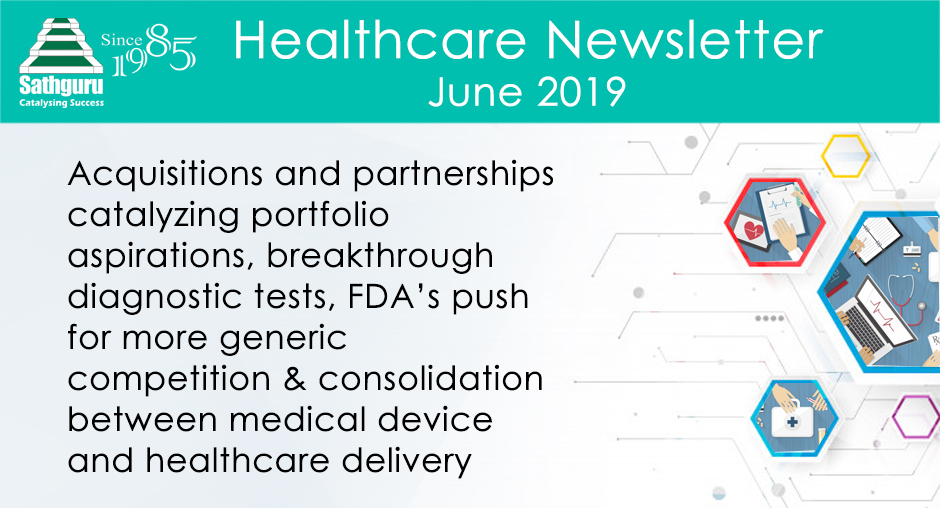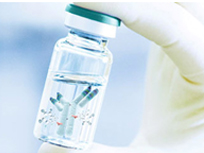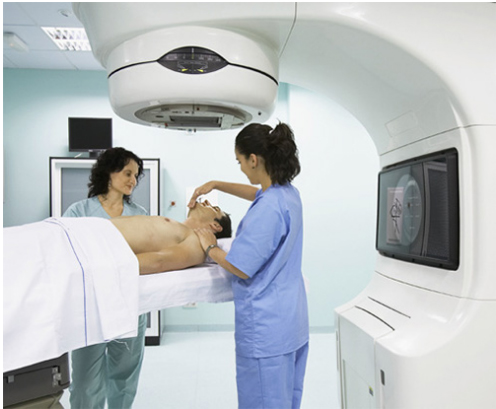
Biosimilars: US trastuzumab approval & partnerships for post 2025 biosimilar opportunities
 Regulatory and commercial reality for biosimilars in the largest but most elusive market. United States, becomes more tangible as the FDA approves another trastuzumab biosimilar and the innovator Roche acknowledges impending sales erosion. FDA’s approval this month of Amgen and Allergan’s trastuzumab biosimilar, Kanjinti, follows earlier approvals for Pfizer, Merck/Samsung Bioepis, Celltrion, and the first approval for Mylan/Biocon in 2017. The long and excruciating delay in market access largely caused by patents and related settlements is expected to end this year. A key patent expires in June 2019 and Roche has admitted in the earnings call that biosimilar competition is expected by second half of 2019. In Europe, Herceptin biosimilars have already captured 38% share of the reference product market after 10 months of competition. Herceptin Europe sales fell by 18% in 2018 due to biosimilar launches, reflecting a highly competitive landscape in EU. Though delayed, opening of the trastuzumab market in US is a significant milestone in the US biosimilar landscape where RoI has been hard to justify so far. This will also provide much needed encouragement for industry investments in the broader context of assets such as adalimumab potentially being devoid of biosimilar competition in US until 2023 – a stark example where nine companies have settled with innovator Abbvie for the US market while EU patients now have access to six commercially launched biosimilars since October 2018. The rest of 2019 is foundational for the US commercial opportunity, and we look forward with optimism to tangible market creation.
Regulatory and commercial reality for biosimilars in the largest but most elusive market. United States, becomes more tangible as the FDA approves another trastuzumab biosimilar and the innovator Roche acknowledges impending sales erosion. FDA’s approval this month of Amgen and Allergan’s trastuzumab biosimilar, Kanjinti, follows earlier approvals for Pfizer, Merck/Samsung Bioepis, Celltrion, and the first approval for Mylan/Biocon in 2017. The long and excruciating delay in market access largely caused by patents and related settlements is expected to end this year. A key patent expires in June 2019 and Roche has admitted in the earnings call that biosimilar competition is expected by second half of 2019. In Europe, Herceptin biosimilars have already captured 38% share of the reference product market after 10 months of competition. Herceptin Europe sales fell by 18% in 2018 due to biosimilar launches, reflecting a highly competitive landscape in EU. Though delayed, opening of the trastuzumab market in US is a significant milestone in the US biosimilar landscape where RoI has been hard to justify so far. This will also provide much needed encouragement for industry investments in the broader context of assets such as adalimumab potentially being devoid of biosimilar competition in US until 2023 – a stark example where nine companies have settled with innovator Abbvie for the US market while EU patients now have access to six commercially launched biosimilars since October 2018. The rest of 2019 is foundational for the US commercial opportunity, and we look forward with optimism to tangible market creation.Evolving market dynamics and potential for a more investment friendly landscape has in turn prompted next-generation partnerships for biosimilar assets with post 2025 patent expiry. STADA and Xbrane Biopharma recently announced the expansion of their biosimilar collaboration beyond ranibizumab biosimilar to also include certolizumabpegol biosimilar referencing Cimzia, and nivolumab biosimilar referencing Opdivo, both of which are currently in preclinical development. We anticipate an active partnership landscape in biosimilar in the near future – for late stage co-development and marketing of assets with patent expiry prior to 2025 and early development partnerships for the future forward pipeline.
Addressing unmet needs with novel diagnostic tests – Parkinson’s, antibiotic resistance & lung cancer
 Breakthrough technologies continue advancing healthcare practices as June witnesses the approvals of three diagnostic tests across a broad spectrum of medical conditions- early diagnosis of Parkinson’s disease, antibiotic resistance test for an infectious disease and an in vitrobiomarker test for a sub-type of lung cancer.
Breakthrough technologies continue advancing healthcare practices as June witnesses the approvals of three diagnostic tests across a broad spectrum of medical conditions- early diagnosis of Parkinson’s disease, antibiotic resistance test for an infectious disease and an in vitrobiomarker test for a sub-type of lung cancer.Amprion’s diagnostic device based on its proprietary Protein Misfolding Cyclic Amplification (PMCA) technology received FDA’s breakthrough device designation. This is the first ever device for an early detection of Parkinson’s, which till date lacks a definitive test. Current diagnostic models are either inept at early detection or definitive detection or are expensive without any early detection mechanism. The PMCA technology is based on detection of specific prion biomarker- alpha-Synuclein, a protein that misfolds into toxic shapes years before the symptoms start surfacing. The device will potentially revolutionize diagnosis and treatment of Parkinson’s in more ways than one- development of prion-targeted therapies, tracking disease progression, assessing predisposition to the disease by comparative analysis of patients with and without Parkinson’s etc.
Another device receiving FDA’s breakthrough designation is Australia-based SpeeDx’sResistancePlus® GC, a molecular test for detecting N. gonorrhea as well as identifying resistance to ciprofloxacin. Globally about 78 million people are affected by gonorrhea, a sexually transmitted disease that has developed resistance to a series of antibiotics used. The ciprofloxacin susceptibility test could provide clinicians a tool for more informed decision making on alternate treatment possibilities in the light of widespread reports of resistance to Ceftriaxone, the current front line treatment for gonorrhea.
The third notable diagnostic development this month is launch of Roche’s VENTANA ROS1 (SP384) Rabbit Monoclonal Primary Antibody, the first and only in vitro diagnostic ROS1 immunohistochemistry assay on the market. The biomarker will provide a cost-effective and efficient means to initially identify elevated ROS1 protein expression, which can then indicate which diagnostic method to use next, such as fluorescence in situ hybridisation (FISH) or next generation sequencing (NGS). Even though ROS1 positive cancers make a small percentage (1-2 %) of all non-small cell lung cancer (NSCLC) cases, use of targeted therapies has amplified the need for accurate classification and detection of the lung cancer subtypes. This is particularly relevant given the current landscape of relatively poor prognosis and treatment options for lung cancer patients worldwide.
M&A: Blockbuster activity dominated by oncology, gene therapy, orthopaedic implants & technology
 Inorganic growth pursuit for portfolio expansion was the flavor of the month across the spectrum of pharma, biotech, devices and technology. The indisputable blockbuster of the month was Pfizer’s $10.6 billion acquisition of Array Biopharma. The mega deal’s valuation with a premium of > 60% over Array’s share price reflects big pharma’s buoyant investment appetite in oncology, even in traditional small molecule combination therapeutics. The deal provides Pfizer access to Array’s portfolio of approved combination treatments, Braftovi and Mektovi, for melanoma. Pipeline indications include clinical stage assets for several tumors including a Phase 3 trail for BRAF-mutant metastatic colorectal cancer. In combination with Cituximab, the combination offers potential for being the first chemotherapy free targeted regimen for the indication. Another oncology focused deal was Merck’s acquisition of Tilos Therapeutics for $773 million. Tilos’ novel portfolio includes drugs that target the latency-associated peptide (LAP)-TGF beta complex to treat cancer, fibrosis and autoimmune diseases. The antibodies are being investigated in several types of cancers- melanoma, colorectal, glioblastoma, lung, breast, pancreatic cancer etc.
Inorganic growth pursuit for portfolio expansion was the flavor of the month across the spectrum of pharma, biotech, devices and technology. The indisputable blockbuster of the month was Pfizer’s $10.6 billion acquisition of Array Biopharma. The mega deal’s valuation with a premium of > 60% over Array’s share price reflects big pharma’s buoyant investment appetite in oncology, even in traditional small molecule combination therapeutics. The deal provides Pfizer access to Array’s portfolio of approved combination treatments, Braftovi and Mektovi, for melanoma. Pipeline indications include clinical stage assets for several tumors including a Phase 3 trail for BRAF-mutant metastatic colorectal cancer. In combination with Cituximab, the combination offers potential for being the first chemotherapy free targeted regimen for the indication. Another oncology focused deal was Merck’s acquisition of Tilos Therapeutics for $773 million. Tilos’ novel portfolio includes drugs that target the latency-associated peptide (LAP)-TGF beta complex to treat cancer, fibrosis and autoimmune diseases. The antibodies are being investigated in several types of cancers- melanoma, colorectal, glioblastoma, lung, breast, pancreatic cancer etc.Acquisition appetite for next generation therapies also continues unabated. This month Biogen closure of the $800 million acquisition of Nightstar Therapeutics. The clinical-stage gene therapy company is focused on adeno-associated virus treatments for inherited retinal disorders. The acquisition marks a significant achievement for Biogen, adding two mid – to late stage clinical assets and preclinical programs in ophthalmology, enabling it with a multi-franchise pipeline of breakthrough therapies.
Ortho implants dominated medical device M&A. Boston Scientific acquired Vertiflex Inc. for the Superion Indirect Decompression System, an FDA approved minimally-invasive device used to improve physical function and reduce pain in patients with lumbar spinal stenosis (LSS). The acquisition adds another non-opioid pain management solution to Boston Scientific’s pain management portfolio. In a smaller and niche transaction, Acumed acquired the RASL (Reduction and Association of the Scaphoid and Lunate) System from Radicle Orthopaedics. The system has been granted 510(k) clearance by the FDA for both the implant and the proprietary instrumentation. This will strengthen Acumed’s portfolio of solutions to address fractures and associated soft tissue injuries of the hand and wrist.
Healthcare and pharmaceutical industry focused technologies companies have witnessed relatively fewer large transactions despite the obvious potential. One of the impediments has been elusive value realization and ambiguity on monetization approaches. The recent acquisition of Zenith Technologies by Cognizant is encouraging as an active investment landscape could prod more technology companies to value creation milestones. Ireland headquartered Zenith Technologies specializes in implementing digital technologies to manage, control and optimize drug and medical device production for operational efficiency and regulatory compliance. The acquisition expands Cognizant’s existing IoT portfolio to offer a comprehensive range of end-to-end smart factory capabilities for the life sciences industry. In the technology space, Sanofi and Google also announced a partnership this month to create a virtual innovation lab where they’ll combine Sanofi’s biologic innovations, scientific expertise and clinical data with Google’s AI to develop both scientific and commercial solutions.
Drug pricing & access: FDA improves transparency for Para IV applications for generics
 In a bid to promote timely access to high-quality, low cost generic drugs, the US FDA has decided to add additional data points to its Paragraph IV Patent Certifications List. Over the last few years, FDA has taken several measures to bolster competitiveness of the generic market, promote more and faster generic drug approvals and thereby drive rationalization of drug costs for American patients. To this direction, the latest move increases level of data available for generic companies to make informed decisions about development, filing and marketing of generic drugs with Para IV certification. The Para IV certification is made by a generic applicant seeking FDA approval to market a generic drug product before the expiration of a patent by asserting that the patent is invalid, unenforceable or will not be infringed by that specific generic drug product. If approved with a Para IV certification, ANDA holders get a 180 day period of shared exclusivity.
In a bid to promote timely access to high-quality, low cost generic drugs, the US FDA has decided to add additional data points to its Paragraph IV Patent Certifications List. Over the last few years, FDA has taken several measures to bolster competitiveness of the generic market, promote more and faster generic drug approvals and thereby drive rationalization of drug costs for American patients. To this direction, the latest move increases level of data available for generic companies to make informed decisions about development, filing and marketing of generic drugs with Para IV certification. The Para IV certification is made by a generic applicant seeking FDA approval to market a generic drug product before the expiration of a patent by asserting that the patent is invalid, unenforceable or will not be infringed by that specific generic drug product. If approved with a Para IV certification, ANDA holders get a 180 day period of shared exclusivity.The Para IV Patent Certifications List published by FDA is one of the Agency’s most viewed databases. This list describes drug products for which abbreviated new drug applications (ANDAs) containing a paragraph IV patent certification have been submitted to FDA. Previously, the FDA’s Paragraph IV Patent Certifications List only stated the name of the drug, its dosage, strength and the date for the first successful generic drug application was made. The enhanced list will now contain number of applicants that are potentially eligible for 180-day exclusivity, status of any 180-day exclusivity decisions for individual drug products, along with other information about the dates of first approval, marketing status and expiration dates of blocking patents. This move will greatly benefit generic companies in making more commercially driven decisions on Para IV applications, an area of particular challenge for the industry given the expanding trend of multiple (often more than 5) Para IV applications rendering the 180 day shared exclusivity unattractive.
Varian acquires Indian cancer hospital: Blurring lines between devices and & delivery
 While several biopharma and medtech companies have contemplated the aspiration to emerge as holistic healthcare solution providers, examples of such forward integration are far and few. Forward integration offers promise of proximity to patient, better understanding of patient needs and higher value realization but often also present conflict due to competition with customer base.
While several biopharma and medtech companies have contemplated the aspiration to emerge as holistic healthcare solution providers, examples of such forward integration are far and few. Forward integration offers promise of proximity to patient, better understanding of patient needs and higher value realization but often also present conflict due to competition with customer base.In this context, the recent acquisition of Indian cancer hospital network CTSI (Cancer Treatment Services International) by Varian Medial Systems, for $283 million, is a symbolic development especially since Varian doesn’t currently have any notable footprint in healthcare delivery even in US or other markets. Varian is a leader in oncology radiation devices and software. Privately held CTSI operates the American Oncology Institute in Hyderabad and 10 multidisciplinary—radiation, medical and surgical oncology— cancer centers across the Indian subcontinent as well as a U.S.-based Oncology Solutions division that provides cancer care professional services to healthcare providers worldwide. Per Varian, the combined entity will facilitate identification of unmet clinical and operational needs through utilization of data, technology and clinical insights to drive advances in technology and healthcare services.
We anticipate that this could be one of many development in the future where medtech companies explore possibilities of limited to more widespread forward integration in healthcare delivery. The defining question of level of synergy and the key conflict of ‘competing with the customers’ is likely to drive decisions in the future.

Featured Mandates:
1. Divestiture of midsize IVD diagnostic company (reagents & POC) in India with robust market footprint and strong product pipeline
Connect with us at lifesciences@sathguru.com to learn more.
Featured News:
-
- Sathguru certified as ‘Great Place to Work’ third time in a row
The certification represents the most definitive employer-of-choice and workplace quality recognition that any organization can receive.
- Sathguru certified as ‘Great Place to Work’ third time in a row
 Grow Beyond
Grow Beyond 

